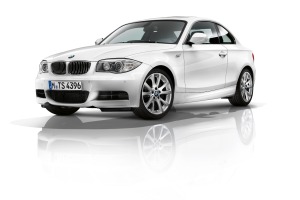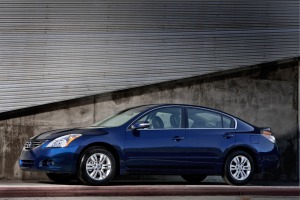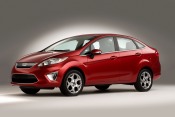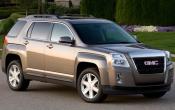You've narrowed your choices to two new cars, but you can't seem to decide which one is really the better deal.
The purchase price of each vehicle is nearly the same. The features are similar, and you like the way they both look. Still, a nagging feeling tells you that there must be a meaningful difference between them, even if it's not obvious during the purchase process.
Your intuition is right on the money. And now there is a new tool that reveals those hidden costs — all of the costs — associated with buying, owning and operating a car over a five-year period. It's called "True Cost to Own®" (TCO® for short), and it is a new consumer product provided by Edmunds.com.
To show you how it works, let's look at two midsize family sedans. The purchase price of one is $21,500 and the other is $22,400. You like each one equally, so your inclination is to say, "I'll just buy the cheaper one." After all, that would save you almost $1,000.
However, the purchase price is only the tip of the iceberg. What you may find by reviewing Edmunds' TCO® figures is that, over five years, the cheaper car to buy is actually more expensive to own. Over five years, it will cost $33,438 to drive the car with the lower initial price. The more expensive car will cost $30,140 to drive over five years. The car with the lower purchase price costs 45 cents per mile to drive while the more expensive vehicle costs 40 cents per mile to drive (assuming you drive 15,000 miles a year).
At this point you are probably wondering how Edmunds comes up with these figures. There are eight components of TCO®: depreciation, interest on financing, taxes and fees, insurance premiums, fuel, maintenance, repairs and any federal tax credit that may be available. The costs are researched and placed into a series of proprietary algorithms developed by Edmunds' statisticians. The result is an estimated total ownership cost for a five-year period. This information is presented on a single page on Edmunds.com for each vehicle. The information is standardized, so expenses for different vehicles can be accurately compared.
TCO® reveals a complete picture of vehicle ownership-related expenses, designed to help consumers make the right choice when purchasing a vehicle. Some buyers might find that they can afford to buy a vehicle, but they can't afford to own it. Understanding a vehicle's TCO® is extremely important to a person on a fixed budget.
An Edmunds analyst who participated in the development of TCO® used an analogy to explain its value: "You are choosing between two shirts and you finally decide to buy the one that is $20 less. But later, you discover that it has to be dry-cleaned using a special process. Each time you get it dry-cleaned, it costs $4 plus the hassle of taking it to the cleaners. After five washes, the savings on the shirt you bought have disappeared, and you probably wish you had bought the more expensive one in the first place."
Additionally, TCO® may confirm something that you already know and help you solidify your decision on which car to buy. For example, it may be common knowledge that a Honda Civic is a good value for the money. With TCO®, you can confirm it or see of things have changed.
You can reach the TCO® page via two paths:
- Click on the TCO® link on the home page and enter the vehicle's year, make, model, style and the ZIP code in which the vehicle will be registered.
- Go to the Vehicle Detail Page for a specific vehicle and look for the True Cost to Own® link in the left-hand column.
On the TCO® page, information is broken down into the following four sections.
TCO® Summary Section
The Summary section shows the results of the TCO® calculations. The information is presented in three ways:
1. The True Cost to Own® figure. This is all of the ownership and operation costs for five years.
2. For new vehicles, the Total Cash Price, is the sum of a vehicle's True Market Value price (another car-buying tool from Edmunds), typically equipped options, destination charge, base tax for the state and any applicable luxury/gas-guzzler taxes. For used vehicles, the total cash price shown is the sum of the vehicle's Private Party TMV price in "clean" condition plus typically equipped options, and base tax and fees in your state.
3. The Average Cost Per Mile is the TCO® figure divided by 75,000 miles (15,000 per year). This gives you a quick reference when comparing multiple vehicles, and helps you determine what the real-world costs are in a smaller, more manageable number.
The summary section gives you an at-a-glance picture of the purchase cost of the vehicle and all the related expenses. Surprisingly, you may find that the purchase cost of the vehicle is a bargain, while the ensuing costs make it prohibitive for your budget.
True Cost to Own® Detail
The True Cost to Own® detail section gives a breakdown of how the vehicle's expenses change over the five-year period. It shows the car's depreciation (the decline in value). This would be important in a case in which there was a sudden drop-off in value after, say, the third year. Knowing this, the owner could sell the car at that time and avoid the subsequent loss of value to his or her vehicle.
The other related expenses are shown in the table on the True Cost to Own® Detail page. While some of the expenses decrease (financing and taxes and fees, for example) other expenses increase (repairs and maintenance).
Compare Popular Vehicles
In the summary area, there is a section called Compare Popular Vehicles. This reminds prospective buyers to consider vehicles made by other automakers and lists alternatives, along with a thumbnail photo.
Also included in the Compare Popular Vehicles table are the True Cost to Own® five-year total, the purchase price and the expected resale value for each vehicle. If any of the cars look like candidates you might consider buying, you can quickly jump to the specific Vehicle Detail Page using the links below the photos.
Total Cash Price Detail
The final section is the Total Cash Price table. This lists the typical expenses related to just the purchase of this vehicle. These are costs that people sometimes overlook when considering a transaction. Seeing them listed, and then totaled, can help you plan for such a large purchase.
We highly recommend you consult TCO® before purchasing a car. It makes ownership costs transparent and gives a breakdown year by year. In this regard, TCO® may influence how long a person owns the vehicle, the number of years they choose to finance the vehicle and other decisions. As one analyst put it, "TCO lets consumers see the depth of the water before jumping in the deep end."
Larry Laumann, executive director of Edmunds' aftermarket data operations, had one final thought, "The only thing we couldn't factor in was the emotional side of car buying. That first moment when you look at a car and say, 'I really like that!' There was no way to put that in a formula."
Check the TCO® of the vehicle you are considering to see the cost of the car over time. You will see the big picture — and not just the price tag.






